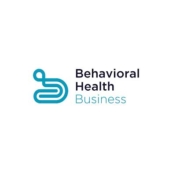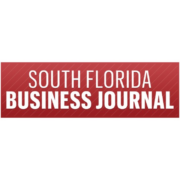Patriot Transportation and United Petroleum Transports to Combine
Wednesday, 1 November 2023
Combined Company to Capitalize on Significant Growth in 5G,
Targeting Opportunities in mmWave and Multi-Edge Computing
Patriot Transportation Shareholders to Receive $16.26 per Share in Cash
JACKSONVILLE, FL / ACCESSWIRE / November 1, 2023 / Patriot Transportation Holding, Inc. (NASDAQ:PATI) (“Patriot” or the “Company”), today announced an agreement under which United Petroleum Transports, Inc. (“UPT”) will acquire all of the outstanding shares of Patriot common stock for $16.26 per share in cash. The transaction values Patriot Transportation at approximately $65.9 million, including assumed cash and debt.
The combination advances UPT’s and Patriot’s shared vision to become a top five bulk tank carrier by revenue with combined revenues in excess of $200 million and to become the premier tank truck company in the southern United States. Upon completion of the transaction, the combined company will have over 1,000 drivers servicing markets from Arizona to Florida covering 11 states with over 30 terminals. The companies have strong market brands and operate with a similar culture focused on safety and quality customer service. To capitalize on its strong brand and reputation, UPT will continue to operate Patriot’s business through Patriot’s subsidiary, Florida Rock & Tank Lines, Inc. (“Florida Rock”). UPT will utilize the combined company strength, the high–quality employees and large regional and national customer base to strategically grow the business.
Florida Rock serves the southeastern United States as a premier bulk tank carrier specializing in hauling primarily petroleum–related products and other liquid and dry bulk commodities. One of the largest regional tank truck carriers in North America, Florida Rock operates in Florida, Georgia, Alabama, and Tennessee with 17 terminals and six satellite locations.
“Patriot is the perfect match for UPT’s strategic intention to expand our network to the southeastern United States,” said Greg Price, Executive Chairman of UPT. We are pleased to welcome one of the leading bulk and tank trucking providers to UPT’s family. Together we will enhance our shared value proposition and invest in exciting growth opportunities providing transportation solutions for new and existing customers.”
Tom Baker, Patriot’s Chairman of the Board said, “We have operated this business for many years, and we appreciate that the quality of the
organization is being recognized by UPT. We appreciate the support of our shareholders and believe this transaction rewards them for their unwavering
support.”
“We are thrilled to partner with a company like UPT that appreciates Patriot’s proud history and is closely aligned with our mission and culture which is focused on safety, our customers and our employees. I believe the combined strength of the management teams will allow us to execute a strategic plan for growth beyond our current footprint. I appreciate UPT’s executive leadership recognizing our strong brand and quality employees and look forward to working side by side with their management team. I am also thankful to Patriot’s Board of Directors, shareholders and the Baker family for their support over the many years here at Patriot,” said Rob Sandlin, President and CEO of Patriot.
Transaction Details
The transaction, which has been unanimously approved by Patriot’s Board of Directors, is subject to the satisfaction of other customary closing conditions, including the approval of Patriot’s shareholders. Shareholders owning 26.6% of the voting power of Patriot’s common stock have agreed to vote in favor of the merger, subject to customary exceptions. Upon completion of the transaction, which the parties expect will occur by early 2024, Patriot will become a private company and delist from the NASDAQ Global Select Market. UPT has obtained a customary financing commitment from an established lending institution pursuant to which the lender will provide financing that, together with other available sources, is expected to be sufficient to fund the merger consideration and other obligations under the merger agreement.
The definitive merger agreement includes a 30–day “go–shop” period that will expire on December 1, 2023, which permits Patriot and its representatives to actively solicit and consider alternative acquisition proposals. There can be no assurance that this process will result in a superior proposal, and the Company does not intend to disclose developments with respect to the go–shop process unless and until it determines such disclosure is appropriate or is otherwise required.
Advisors
Cassel Salpeter & Co., LLC is serving as financial advisor and Foley & Lardner LLP is serving as legal counsel for Patriot.
Stephens Inc. is serving as financial advisor and Scudder Law Firm, P.C., L.L.O. is acting as legal counsel for UPT.
About Patriot Transportation Holding, Inc.
Patriot conducts business through its wholly owned subsidiary, Florida Rock. The Company transports petroleum and other liquids and dry bulk commodities. A large portion of the Company’s business consists of hauling liquid petroleum products (mostly gas and diesel fuel) from large scale fuel storage facilities to the customers’ retail outlets (e.g., convenience stores, truck stops and fuel depots) where it off–loads the product into its customers’ fuel storage tanks for ultimate sale to the retail consumer. The Company also hauls dry bulk commodities such as cement, lime and various industrial powder products, water and liquid chemicals. The Company currently operates 19 terminals in addition to numerous truck domicile locations throughout the Southeast. With one of the most modern tank fleets available in the industry, the Company is composed of more than 300 tractors and 400 trailers.
About United Petroleum Transports, Inc.
Founded in 1966, United Petroleum Transports is the largest carrier of motor fuels, aviation fuels and chemicals in the Southwest, with Customer Service Centers in Alabama, Arizona, Georgia, Kansas, New Mexico, Oklahoma and Texas. Headquartered in Oklahoma City, UPT is a leader in the tank truck industry, with a professional driver base of more than 650 professional drivers who safely and dependably serve UPT customers across the USA and Canada.
Additional Information About the Merger and Where to Find It
This communication is being made in respect of the proposed merger involving Patriot and UPT. A meeting of the shareholders of Patriot will be announced to seek shareholder approval in connection with the proposed merger. Patriot will file with the Securities and Exchange Commission (“SEC”) a proxy statement and other relevant documents in connection with the proposed merger. The definitive proxy statement will be sent or given to the shareholders of Patriot and will contain important information about the proposed merger and related matters. INVESTORS AND SHAREHOLDERS OF PATRIOT TRANSPORTATION HOLDING, INC. SHOULD READ THE DEFINITIVE PROXY STATEMENT AND OTHER RELEVANT MATERIALS CAREFULLY AND IN THEIR ENTIRETY WHEN THEY BECOME AVAILABLE BECAUSE THEY WILL CONTAIN IMPORTANT INFORMATION ABOUT PATRIOT TRANSPORTATION HOLDING, INC., UNITED PETROLEUM TRANSPORTS, INC., AND THE MERGER. Investors may obtain a free copy of these materials (when they are available) and other documents filed by Patriot with the SEC at the SEC’s website at www.sec.gov, at Patriot’s website at www.patriottrans.com or by sending a written request to the Patriot’s Secretary at 200 W. Forsyth Street, 7th Floor, Jacksonville, FL 32202.
Participants in the Solicitation
Patriot and its directors, executive officers and certain other members of management and employees may be deemed to be participants in soliciting proxies from its shareholders in connection with the merger. Information regarding the persons who may, under the rules of the SEC, be considered to be participants in the solicitation of Patriot’s shareholders in connection with the merger will be set forth in Patriot’s definitive proxy statement for its shareholder meeting. Additional information regarding these individuals and any direct or indirect interests they may have in the merger will be set forth in the definitive proxy statement when it is filed with the SEC in connection with the merger. Information relating to the foregoing can also be found in Patriot’s definitive proxy statement for its 2023 Annual Meeting of Shareholders (the “Annual Meeting Proxy Statement“), which was filed with the SEC on December 9, 2022. To the extent that holdings of Patriot’s securities have changed since the amounts set forth in the Annual Meeting Proxy Statement, such changes have been or will be reflected on Statements of Change in Ownership on Form 4 filed with the SEC.
This announcement contains “forward–looking statements,” within the meaning of Section 27A of the Securities Act of 1933, Section 21E of the Securities Exchange Act of 1934 and the Private Securities Litigation Reform Act of 1995, including statements relating to the completion of the merger.
These forward–looking statements are generally denoted by the use of words such as “anticipate,” “believe,” “expect,” “intend,” “aim,” “target,” “plan,” “continue,” “estimate,” “project,” “may,” “will,” “should,” and similar expressions. However, the absence of these words or similar expressions does not mean that a statement is not forward–looking. These statements reflect management’s current beliefs and are based on information currently available to management. Forward–looking statements are based upon a number of estimates and assumptions that, while considered reasonable by management, are inherently subject to known and unknown risks and uncertainties and other factors that could cause actual results to differ materially from historical results or those anticipated. These factors include, but are not limited to: (a) the satisfaction of the conditions precedent to the consummation of the merger, including, without limitation, the timely receipt of shareholder approval; (b) uncertainties as to the timing of the merger and the possibility that the merger may not be completed, including uncertainties regarding UPT’s ability to finance the merger; (c) unanticipated difficulties or expenditures relating to the merger; (d) the occurrence of any event, change or other circumstance that could give rise to the termination of the merger agreement, including, in circumstances which would require Patriot to pay a termination fee; (e) legal proceedings, judgments or settlements, including those that may be instituted against Patriot, Patriot’s Board of Directors, Patriot’s executive officers and others following the announcement of the merger; (f) disruptions of current plans and operations caused by the announcement and pendency of the merger; (g) risks related to disruption of management’s attention from Patriot’s ongoing business operations due to the merger; (h) potential difficulties in employee retention due to the announcement and pendency of the merger; (i) the response of customers, suppliers, drivers and regulators to the announcement and pendency of the merger; (j) disruptions in the execution of plans, strategies, goals and objectives of management for future operations caused by the merger; (k) changes in accounting standards or tax rates, laws or regulations; (l) economic, market, business or geopolitical conditions (including resulting from the COVID–19 pandemic, inflation, the conflict in Ukraine and related sanctions, or the conflict in the Middle East) or competition, or changes in such conditions, negatively affecting Patriot’s business, operations and financial performance; (m) risks that the price of Patriot’s common stock may decline significantly if the merger is not completed; (n) the possibility that Patriot could, following the merger, engage in operational or other changes that could result in meaningful appreciation in its value; and (o) the possibility that Patriot could, at a later date, engage in unspecified transactions, including restructuring efforts, special dividends or the sale of some or all of Patriot’s assets to one or more as yet unknown purchasers, which could conceivably produce a higher aggregate value than that available to Patriot’s shareholders in the merger. Accordingly, no assurances can be given that any of the events anticipated by the forward-looking statements will occur or if any occur, what effect they will have on Patriot’s results of operations or financial condition.
If the proposed merger is consummated, Patriot’s shareholders will cease to have any equity interest in Patriot and will have no right to participate in its earnings and future growth. Other factors that could impact Patriot’s forward–looking statements are identified and described in more detail in Patriot’s Annual Report on Form 10–K for the year ended September 30, 2022 as well as Patriot’s subsequent filings and quarterly reports and is available online at www.sec.gov. Readers are cautioned not to place undue reliance on Patriot’s projections and other forward–looking statements, which speak only as of the date thereof. Except as required by applicable law, Patriot undertakes no obligation to update any forward–looking statement, or to make any other forward–looking statements, whether as a result of new information, future events or otherwise.
Contact:
Matt McNulty
Chief Financial Officer
904/858–9100
SOURCE: Patriot Transportation Holding, Inc.
Click here to read the full article.
Click here to read the PDF.









